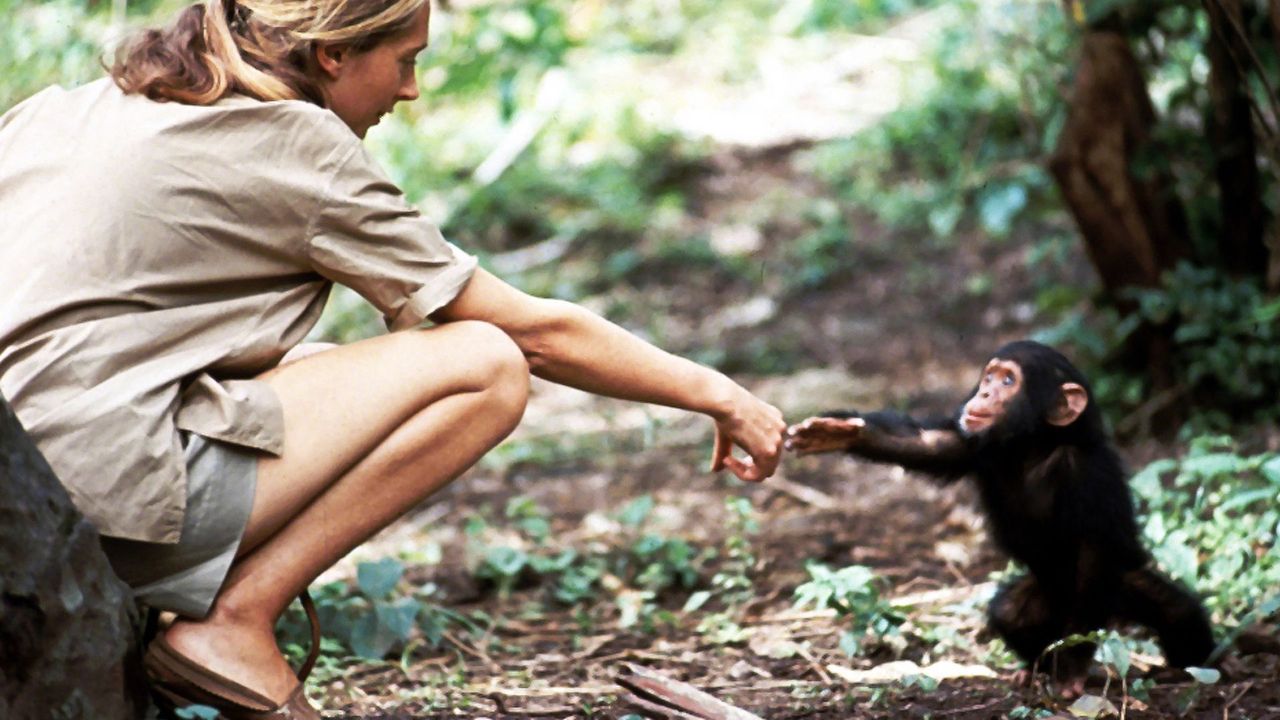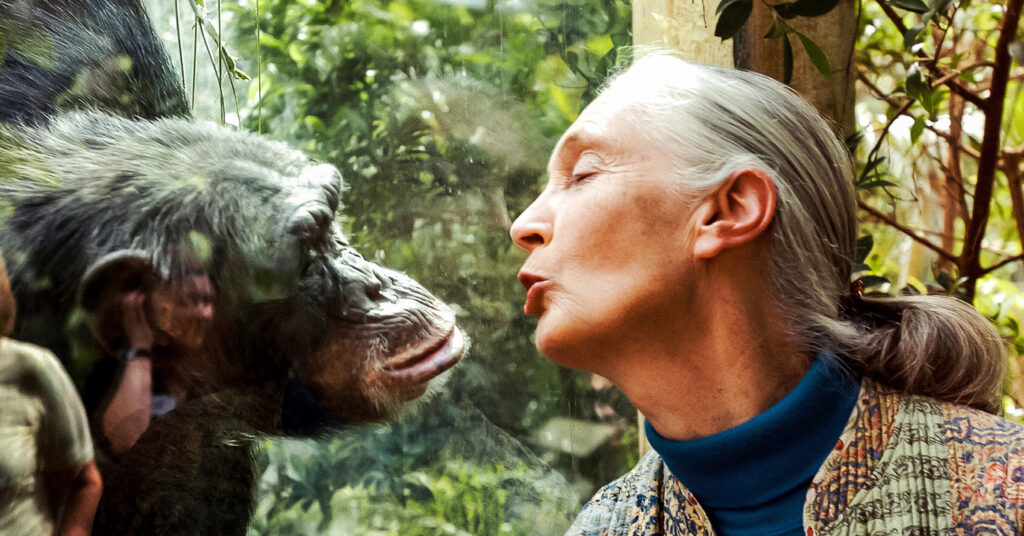Jane Goodall- Chimpanzee Conservation
Early Life
Jane Goodall, In her youth, Dr. Jane Goodall aspired to inhabit the wilderness alongside Africa’s fauna. At the age of 22, she received an invitation to visit her buddy in Kenya. She generated income as a waiter to finance her journey to Africa. She arrived on April 2, 1957. In a matter of weeks, she encountered Louis Leakey, the renowned archaeologist and paleontologist. Leakey was impressed by Jane’s passion and employed her as an assistant.
Leakey suggested that insights into the poorly comprehended chimpanzees could yield indications regarding human evolutionary history. He requested Jane to conduct a study on a group of chimpanzees residing around the beaches of Lake Tanzania. In July 1960, Jane arrived at the beach in Gombe with her mother to appease the British authorities who opposed a young woman residing alone in the woods.

Altering our comprehension of Chimpanzees
Jane experienced frustration during her initial weeks in Gombe, since the chimpanzees fled at her sighting. One day, she discovered an advantageous location from which she could observe the chimpanzees from afar. Her studies yielded remarkable insights into primate behavior.
Organisms that consume both plant and animal matter
From a distance, she watched a chimpanzee, which she named David Greybeard, consuming a juvenile bush pig. Jane would thereafter witness chimpanzees engaging in active hunting. Until now, it was presumed that chimpanzees were exclusively herbivorous. Merely two weeks later, she was ascending a hilltop when she observed a chimpanzee in the underbrush – David at a termite mound. He utilized an elongated, pliable probe to extract termites from the mound. Jane built a hiding to observe the chimpanzees upon their return.
Instruments
She subsequently observed as they removed the leaves from twigs to fashion a rudimentary tool employed for extracting termites. This was a pivotal moment in our comprehension of primates. Until now, tool-making was seen as a distinguishing characteristic separating humans from animals; nevertheless, this recent revelation has changed our comprehension of chimpanzees, tools, and humanity.
Leakey was elated by Jane’s discoveries and facilitated funds for her enrollment as a doctorate student at Cambridge University, despite her lacking a degree. Jane then resumed her research at Gombe. She uncovered that chimpanzees are unique individuals with distinct personalities, a notion that contradicted the prevailing views of ethnology at that time. Jane insisted on assigning names to her chimpanzees instead of numbers in her studies, a practice that was unprecedented at the time.
Over her 45 years of researching chimpanzee behavior, Jane has cultivated a profound understanding of chimpanzee culture and is regarded as the preeminent expert in the topic. Jane’s findings were published in National Geographic, accompanied by striking photographs taken by Hugo van Lawick, who was Jane’s first husband. Increased support and financing led to the establishment of the Gombe study and the Gombe Stream Research Centre.
Intricate social behavior of chimpanzees
In the 1970s, Jane witnessed the more sinister aspects of chimpanzee behavior as hostilities arose between competing groups, during which a chimp named Figan led his troop into battle, resulting in the deaths of all seven competitor males and one female. The females also displayed unsettling behavior. They slaughtered and consumed between 5 and 10 neonates. Despite the terrible nature of such savagery, Jane also discusses the generosity exhibited by the chimpanzees. Two orphaned chimpanzees were adopted by two older male chimpanzees, who were themselves orphans.
An augmented mission – conservation education
Throughout the years, the Gombe Stream Research Centre expanded, and Jane together with her colleagues investigated chimpanzee eating behavior, ecology, newborn development, and violence. Jane commenced extensive travel to advocate for conservation while consistently returning to Gombe. Her work, The Chimpanzees of Gome: Patterns of Behaviour, was released in 1986. During a symposium in Chicago commemorating the book’s introduction, numerous chimpanzee researchers convened and recognized the extensive and pressing problems confronting chimpanzees.

The message was unequivocal for Jane. We possess a significantly enhanced understanding of chimpanzees presently. They resemble us more closely than we previously imagined. However, we must assist in their salvation. Jane entered the conference as a scientist. She departed as an activist, resolute in her mission to protect the remarkable species with whom she was intimately familiar.
Present day Jane travels about 300 days annually. She could be on any continent at any moment. On any given day, she may address a group of students, confer with government officials regarding conservation matters, be interviewed before news cameras, or engage with benefactors to solicit funds for JGI.
Jane persistently endeavors for the conservation and safeguarding of the chimpanzees and their environment. However, it extends beyond that; Jane, in particular, engages with youngsters, educating them on conservation and fostering a better society. Jane is highly sought after and recognized as a motivational speaker.
